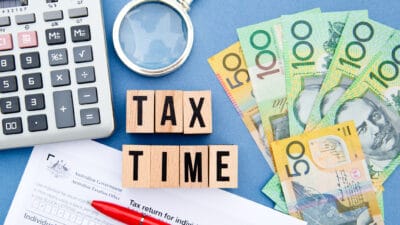Within the rise of "buy now, pay later" (BNPL) services in Australia, there is one provider that has seen a meteoric rise to fame like no other: Afterpay.
The Afterpay Touch Group Ltd (ASX: APT) share price went bananas in 2018, surging 200% as the company saw its underlying sales revenue swell and on-boarded a swathe of new clients in a big vote of confidence for the business model. Let's take a look at what Afterpay actually is and how it can be used as a powerful personal finance tool.
What is Afterpay?
Afterpay was founded by Nick Molnar and Anthony Eisen back in 2015 and prides itself on being a leading provider of BNPL services to its over 3.1 million users with a near-instant sign-up process for the service.
Customers can sign up at checkout (online or in-store) with one of the 23,200 active Afterpay merchant partners and be approved immediately, allowing them to receive their desired goods straight away while only paying a fraction of the price (usually 25% up-front). The retailer receives full payment from Afterpay minus a 4-7% transaction fee and Afterpay takes on the contract between the customer for the remaining 75% of the purchase price, repaid via equal fortnightly installments.
So, what's the catch?
Well, for those that can use the service effectively, there really isn't one. One of the keys to Afterpay's success has been its relatively low purchase limit of $500 for debit card users and $1,000 for credit card users, which has lowered the company's credit risk but also restricts which products can be purchased using the service.
Afterpay has been in the news of late as it, alongside fellow BNPL providers, went through a Senate inquiry into the sector as well as being subject to an ASIC investigation of its business model. The main point of contention relates to whether or not Afterpay is classified as a "credit provider" by taking on the credit risk with the customer contract.
As it turns out, Afterpay (and the BNPL industry) is likely to be better-regulated in the future but will not be regulated as a credit provider under the National Consumer Credit Protection Act 2009, which would have removed Afterpay's current competitive advantage with its instant verification process.
How can Afterpay help me level up my finances?
While many of Afterpay's users rely on the service to make purchases that they may not currently have the money to pay for up front, I personally use Afterpay quite regularly as a personal budgeting tool.
In essence, this process simply involves personal cash flow smoothing in much the same way as a large company would – matching your income with your expenses. I personally pay myself a fortnightly spending "wage" from my income and using the Afterpay repayments strategically allows me to better match my purchases with spending income, and reduces the volatility in my bank account levels which I find particularly useful.
Should I sign up?
As the name suggests, personal finance matters are inherently specific to each individual's circumstances. While I personally find the Afterpay service quite useful as a budgeting tool (and a form of easy, forward credit) there are always risks if spending levels get out of control or you lose track of your purchases. It's wise to consider how Afterpay could fit into your own spending patterns and make the call on whether or not to sign up and get cracking!








